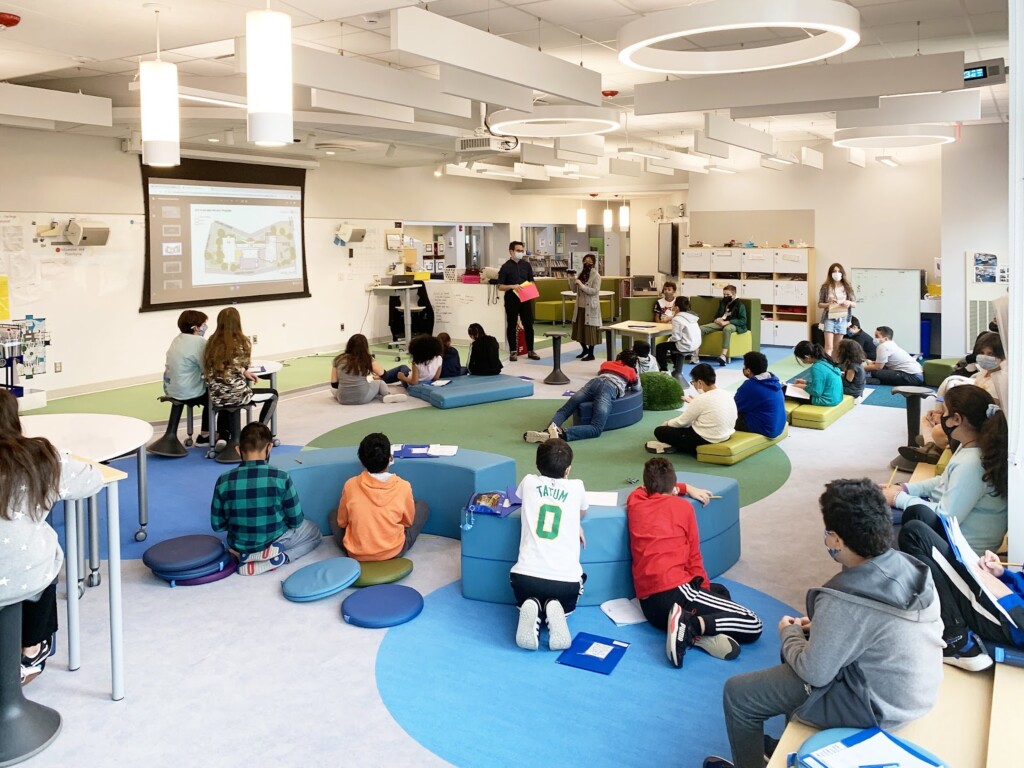School Resilience and Educator Efficacy: The Power of Flexible Learning Environments
Key Points
-
In the evolving landscape of education, professional learning stands as a powerful catalyst to foster teacher or system resilience, effectiveness, and job satisfaction.
-
But how can we make the profession more rewarding and impactful?
-
Schools around the world are realizing that their flexible learning environments are improving conditions for educators’ well-being, helping build stronger teams, improving culture, and benefiting students as a result.

By: Mike Posthumus
In the evolving landscape of education, professional learning stands as a powerful catalyst to foster teacher or system resilience, effectiveness, and job satisfaction. But how can we make the profession more rewarding and impactful? Schools around the world are realizing that their flexible learning environments are improving conditions for educators’ well-being, helping build stronger teams, improving culture, and benefiting students as a result.
Flexible learning environments are not just for students. These spaces serve as hubs for professional development, nurturing a collaborative culture and fostering professional learning communities (PLCs). The PLC model offers a collaborative approach to professional development, allowing educators to share expertise, exchange ideas, and learn from each other in a real-time, practical setting. A study by Waldron and McLeskey found that schools that implemented the PLC model in a flexible learning environment experienced increased teacher effectiveness, improved student achievement, and a more positive school culture.
In these flexible spaces, teachers become students, learning and seeing new teaching methodologies, integrating technology effectively, and understanding diverse student needs alongside their peer educators without the siloed classroom that has traditionally contained educators for the spirit of collaboration that is so widely discussed in education circles. The interactive nature of these environments creates a network of professional educators collaborating in real-time, offering feedback, peer observation, and co-teaching, enhancing the quality of professional learning and implementation of high-quality practices that help kids.
Beyond enriching teaching methods and enhancing student engagement, flexible learning environments also serve a more pragmatic function in bolstering the resilience of staffing structures.
Mike Posthumus
Beyond enriching teaching methods and enhancing student engagement, flexible learning environments also serve a more pragmatic function in bolstering the resilience of staffing structures. The inherent adaptability of these environments allows for seamless adjustment in cases of unforeseen adult absences, ensuring continuity in student learning. Instead of traditional isolated classrooms that depend heavily on the presence of a single teacher, the fluid structure of flexible learning spaces fosters a sense of shared responsibility among educators, promoting cross-functional teamwork.
The malleability of these spaces supports unanticipated shifts in a school’s day-to-day operations, effectively accommodating spur-of-the-moment events or sudden changes in school routines. For example, a flexible learning space can swiftly transition from a collaborative group work setup to a lecture-style arrangement for a surprise guest speaker or can be rearranged to host an impromptu school assembly or event.
But the power of flexibility extends beyond physical space and into the teaching strategies employed. It empowers teachers to pivot their instructional methods as needed, honing practices in real-time based on student feedback and peer input. This dynamic, responsive approach builds a more resilient teaching community that can adapt swiftly to changing educational circumstances or challenges. Flexible learning environments are not just about providing versatile spaces; they’re about nurturing an adaptable, resilient, and collaborative educational community that can thrive in the face of both routine and unexpected challenges.
So, if you’re an educator or school administrator looking to invigorate professional learning and practices while making your system more resilient, it’s time to embrace the type of flexibility demonstrated at Eden Park. By transforming a block of classrooms into dynamic, collaborative spaces that are collectively shared and understood as environments to help all students learn, we can catalyze professional growth, foster resilience, and ultimately, enhance the quality of education we deliver to our students. As always, email me to talk more about the specific challenges you are facing in your buildings and the models we could explore to meet your specific programming needs.
Mike Posthumus, a leader in education innovation since 2009, excels at transforming complex challenges into successful strategies, utilizing a human-centered design thinking approach. As Vice President of Learning and Engagement at the Grand Rapids Public Museum, he co-established the XQ Super School award-winning Grand Rapids Public Museum School, reflecting his commitment to place-based and experiential learning. He holds a Master’s in Education Administration and now serves as the Learning Design Principal for Fielding International where he collaborates with an interdisciplinary team in designing the ideal conditions for learners to thrive.





0 Comments
Leave a Comment
Your email address will not be published. All fields are required.